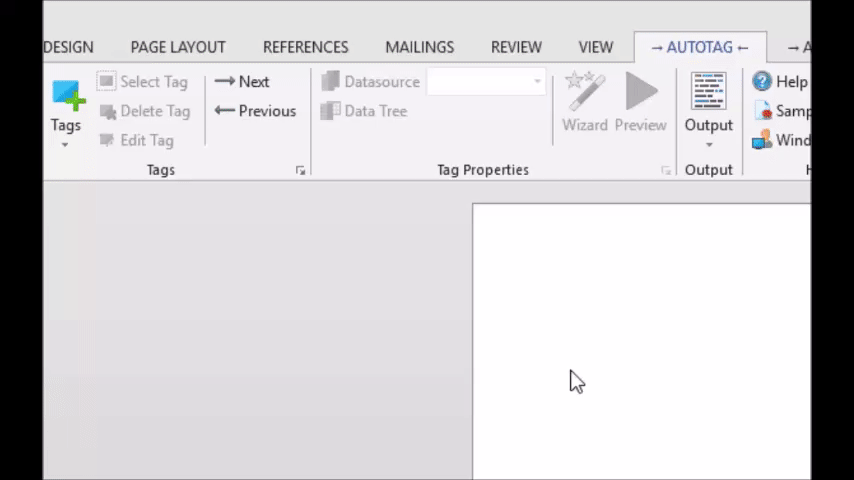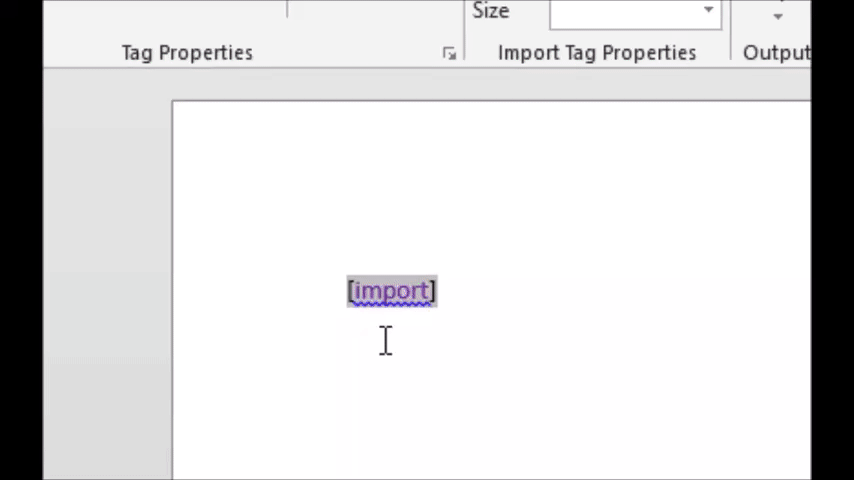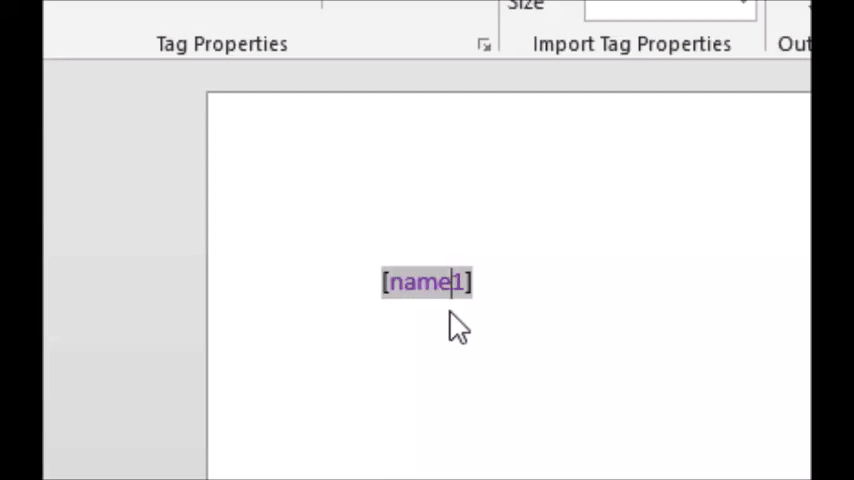Objective
To import external images using URLs or file locations retrieved from a database.
Background Information
The import tag can be used for more than just importing images. It can import entire templates, text documents, Word documents, and PDF documents. Here we'll go over importing images, but importing other files is nearly identical.
Pre-requisites
Inserting a Tag, Connecting to your XML dataStarting Template
Before starting this tutorial, please follow the Creating an XML Datasource tutorial, and use the file "Images - Data.xml" which can be found in Documents/AutoTag/data if you chose to install the samples when you installed AutoTag.
Procedure
1. Insert an Import Tag
2. Select name1 as the Data
The name1 column/node in the sample datasource contains a filename of a local filename. This file can also be found in the Documents/AutoTag/data directory. If they aren't, you can paste the following into the value field: " 'http://www.windward.net/images/logo.png " The value field is above the Data tree. Make sure you include the single quote at the beginning.
3. Evaluate and View Results
Click the Evaluate button in the AutoTag ribbon to view the results of the import tag.


